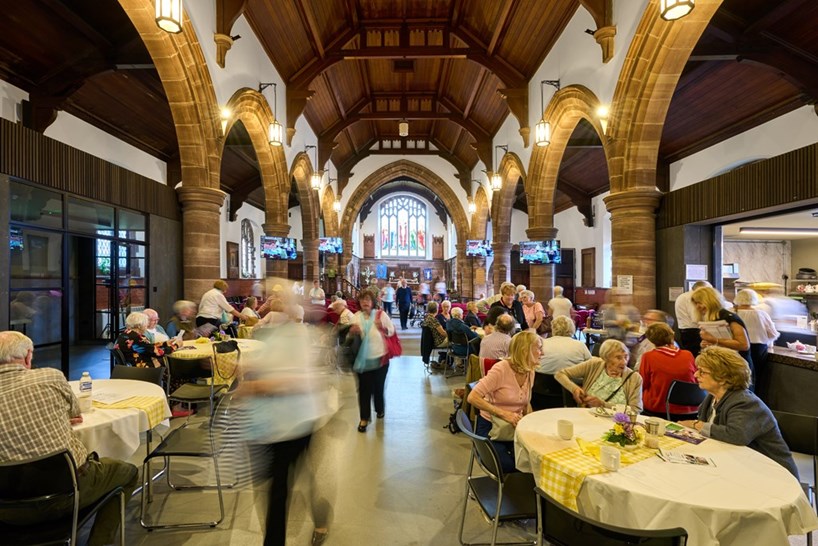AMID debate among bishops about the pros and cons of the “strings” attached to financial grants from the Archbishops’ Council, national funding of £6.2 million has been awarded to Liverpool diocese, the poorest in the Church of England.
The award is part of a larger sum agreed in principle — about £30 million over the next seven years — with a goal of ensuring that every parish is “missionally and financially sustainable”, the diocese says.
The grant will enable it to maintain a reduced level of parish share, avoid a reduction in clergy numbers for financial reasons, and invest in a youth and children’s hub in most deaneries. Other aims include the creation of deanery resource hubs, with employed administrative posts, “lightening the load for parish offices and volunteers”.
Last year’s national Diocesan Finances Review warned of dioceses’ “increased dependency on the NCIs”. In the General Synod last month, some bishops criticised this balance of power, referring to the “exhausting” demands of the grant system (News, 18 July). Last year, only Archbishops’ Council fundings prevented the exhaustion of Liverpool’s usable reserves.
In March last year — before the latest triennium-funding announcement — the diocesan board of finance (DBF) told the diocesan synod that without national funding the 2025 budget could be “simply a bridge towards a different landscape, one of less certainty, reducing capacity and almost certainly on-going medium-term decline”.
Over the past 30 years, Sunday attendance in the diocese has fallen by 65 per cent. Its latest annual report says that a lack of historic assets, a “challenging demographic”, and low land values mean that the overall difference in income between Liverpool and the average diocese in England is nearly £5 million a year. This context meant that parish share as a proportion of parish income had been higher than elsewhere: “too high”.
 ROB BATTERSBYVolunteers at the St Paul’s, Wigan community cafe
ROB BATTERSBYVolunteers at the St Paul’s, Wigan community cafe
The 2025 budget, described as a plan for growth, reduced parish share by 13 per cent (to 37 per cent of parish income — commensurate with what might be expected in another diocese) and expected that this could be maintained were a bid to the Strategic Mission and Ministry Investment Board successful. But the parish-share situation would need to improve, it said: “Without credibility with our national partners, we will not secure additional funding for the period from 2025-31 and we will face increasingly curtailed financial freedom.”
At the end of August 2024, the collection rate stood at 88 per cent, creating an “unsustainable” shortfall of £665,000. But on Wednesday, the diocesan director of finance, Matt Elliott, said that this had increased in previous months to about 98 per cent.
Liverpool is rolling out a Fit for Mission programme, under which larger single parishes are being formed on an opt-in basis, bringing the total down from 250 to 25 or fewer by 2028 (News, 10 May 2024). Participating parishes will be expected to commit themseves to breaking even in their budgets over a three-year cycle in order to receive “funding the future” grants (£5000 p.a. per stipendiary post for up to four years) and to deploy future clergy. They will use a “health and viability tool” to track attendance and parish reserves, and undergo a mission planning and review process.
A press release on the bid, issued in October, spoke of the need to “be realistic” and “think about those churches who struggle to be viable. . . we may need to bring in fresh leaders or plant new congregations. We may have to consider closing unviable church buildings and finding different ways to serve.”
In September, in a letter to clergy in the diocese, the Archdeacon of St Helens and Warrington, the Ven. Simon Fisher, spoke of the need for “cultural change”, with greater collaborative working, and observed that the diocese was “woefully under- resourced on the frontline stretching all who want to do mission and diverting them to necessary but not missional administrative tasks”.
The full bid, first made last October and covering seven years, was resubmitted after the SMMIB requested further information and reassurance about leadership in the diocese. In his letter, Archdeacon Fisher set out targets for 2030, including 20- to 30-per-cent growth in the number of adult disciples and 100- to 120-per-cent growth in the number of children and young people in worshipping communities, and a fivefold increase in youth workers.
 ROB BATTERSBYThe community cafe at St Paul’s, Wigan
ROB BATTERSBYThe community cafe at St Paul’s, Wigan
On Wednesday, the diocesan secretary, Sharon Parr, said that the SMMIB process had been “hard”, but that the national funding had helped the diocese to be “rigorous. . . The more that we can adopt a partnership approach, the more it will help the national Church understand well what is happening on the ground.”
Mr Elliott said that feedback from national consultants, who could draw on the experience of other dioceses, had been “really helpful” in devising a plan that would work in Liverpool.
“The diocese has been through a lot,” Ms Parr said. But there was “a real energy and commitment to seeing God moving in this place”. The diocese has reported that the first two deaneries participating in Fit for Mission had seen 17-per-cent growth in adult, and 25-per-cent in child, numbers in worshipping communities in 2024.
In the next triennium, the diocese is due to receive £2.4 million in Lowest Income Communities Funding.
















